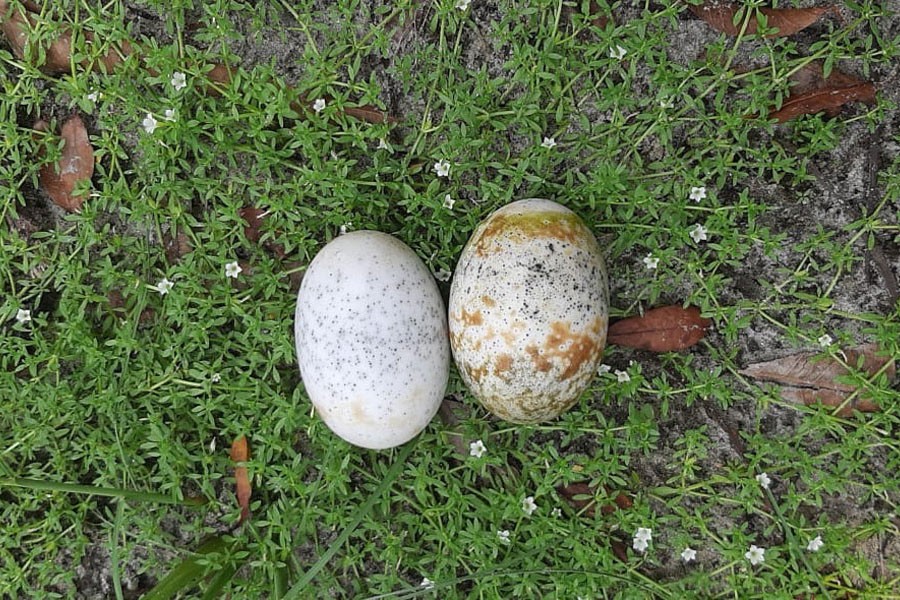
Shaheed AHM Kamaruzzaman Botanical Garden
Gharial pair yet to hatch babies even after spawning six times
ANAET KARIM | Tuesday, 6 August 2024

RAJSHAHI, Aug 05: A pair of gharials (Gavialis gangeticus), also known as gavial or fish-eating crocodile, named Garai and Padma laid eggs six times but have failed to hatch babies at Shaheed AHM Kamaruzzaman Botanical Garden in Rajshahi.
Recently the female gharial has laid eggs again. But this time too, there is no hope of having a baby. But if breeding is not possible, experts fear that this animal will be declared extinct in the country.
According to the garden authorities, in 1990, two gharials were rescued from the Padma River in Rajshahi and kept here (in the garden).
Since both the gharials were female, so in 2017 a male gharial named Garal from Dhaka was paired with one of the females. For this reason, a suitable breeding environment for gharial has also been created in the garden.
In the meantime, the paired female gharial started laying eggs. However, even after giving eggs six times, they could not be hatched.
Recently, it is known that another attempt is being made to create a suitable environment for the propagation of gharial.
Babar Ali and Shariful Islam, who work at Shaheed AHM Kamaruzzaman Garden, said that the female gharial has laid eggs six times, but babies could not be hatched out yet. Female gharial Padma has laid at least 32 eggs this year around March. However, those got damaged after being put in water. Gharial eggs got damaged in the same way before.
But last year a few eggs were found in the sand near the water. They were carefully buried in the sand but did not hatch. In many cases, the gharials destroy eggs themselves.
Meanwhile, about three months ago, reptile researcher Borhan Biswas Raman volunteered to work on gharial breeding. He said there is a lack of suitable environment for hatching babies. During the breeding season, gharials select sites with silt and soft grass for at least three months before spawning.
Where there is heat during daytime, it will continue at night. But that environment is not available here.As a result, on the advice of Borhan Biswas, an initiative has been taken recently to change the soil on one side of the pond and plant grass in the garden. It has also been decided to keep the gharials hidden from the visitors' view during the breeding season.
Borhan Biswas said if the breeding is successful, it is possible to save the balance of the environment by releasing the gharial babies in the river.
Even if two gharial cubs are produced from here, the animal will survive in the country for the next half century because the average lifespan of the gharial is at least 60 years.
They can grow up to 20 feet long and weigh up to 160 kgs. Adults are dark grey, but young gharials are brightly coloured. March and April are the gharial's breeding season. At this time, the mother animal lays eggs in the sand bed of the river and covers them with sand. Together they lay 20 to 95 eggs. Eggs hatch in 71 to 93 days.
anaetru@gmail.com